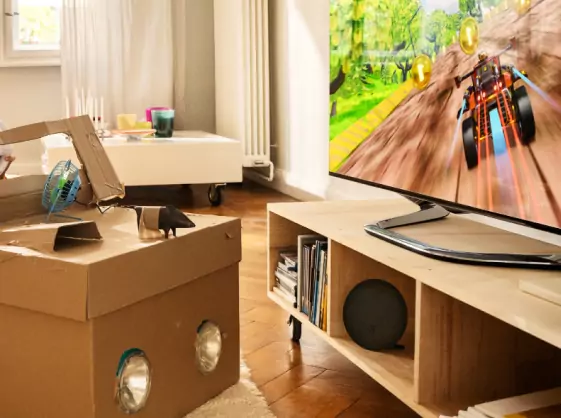Firmware upgrade 010137.4.6.001.2 - issues with local DHCP
vor 5 Jahren
Hallo, es tut mir leid, mein Deutsch ist nicht sehr gut. Also, um Verwirrung zu vermeiden, werde ich in Englisch schreiben.
My Speedport Smart 3 router upgraded to the new firmware 010137.4.6.001.2.
My set up is Router (192.168.2.1) >> internal router (192.168.1.1) >> multiple devices.
I had no issues until last week, where I decided to reset my router because of forgotten settings. Of course, the DHCP tables were cleaned, because of the reset. After the reset, and configuration, I could not connect to the internet. I was connected directly to the router, and nothing worked. When I went to the router web 192.168.2.1 (default), I saw that the no device was shown with DHCP lease, and in the logs, it said DHCP assignment had failed. I looked at the auto-IP configuration on my computer, and it picked up 192.168.1.xxx IP, with Gateway and DNS at 192.168.1.1. This is odd because my internal network where I have medias, raspberryPi, and other devices directly connected runs on 192.168.1.1. I checked the TV box connected to the router, and it also had 192.168.1.xxy IP with error that it couldn't connect to TV service, so looked like router was handing out different DHCP IP vs. its own, and computers didn't know how to get through.
I manually changed my computer configuration to 192.168.2.xxx, changed Gateway and DNS, and internet was working. I removed the manual configuration and it was back to same. I changed the DHCP assignment from 192.168.2.x to 192.168.1.x on the Speedport, and with auto-configuration on my computer, again I had internet.
So, this caused a huge problem/headache for my internal network because most of my internal network is static IP and it wasn't going to work with my internal router being 192.168.1.1 and Speedport also being same IP. I had to re-do my internal network to change the devices IP and it wasted my entire day.
Something I noticed that, it didn't crash immediately after the firmware update. I have 3 devices connected to Speedport. TV, Internal Router, and a Server. They all were assigned static IP via the Speedport page > Network > Connected Devices > "Always same IP Address" for each device. So, they were receiving same IP, so I had no issues because no new devices were plugged in. Until, after the reset, which cleaned out the table and router started to hand out different IP than the DHCP allowed.
I am not sure if it is just me (odd), or someone else has run into this, or someone else will run into this in the future. I believe it is an issue on the firmware, but if I have overlooked something, please tell me.
Sorry for long text.
Thank you
Reds
982
0
8
Das könnte Ihnen auch weiterhelfen
vor 2 Jahren
137
0
2
vor 4 Jahren
610
0
1
2489
0
3
390
0
2
vor 4 Jahren
392
0
2
Beliebte Tags letzte 7 Tage
Das könnte Sie auch interessieren
Kaufberatung anfragen
Füllen Sie schnell und unkompliziert unser Online-Kontaktformular aus, damit wir sie zeitnah persönlich beraten können.

Angebote anzeigen
Informieren Sie sich über unsere aktuellen Internet-Angebote.

vor 5 Jahren
Taking a wild guess here: Could it be you accidentally connected one of your internal router's LAN ports, instead of it's WAN port, with the Speedport? That would effectively create one single LAN with the DHCP servers in your internal router and in the Speedport sending competing responses to devices requesting configuration information via DHCP. Devices would end up using the IP address, gateway etc. from whichever router responding quicker.
What make and model is the internal router?
7
von
vor 5 Jahren
So, what you're saying is (after the edit), I can plug the Ethernet cable from fiberModem thats on the distribution panel where the fiberOptic comes in, to the router directly, skipping Speedport? I was told by Telekom then, that Speedport was needed. That's the only router that can translate the signal.
I haven't tried connecting to it directly, bypassing Speedport. I had ended up purchasing the Speedport instead of leasing it. I'll have to try it this weekend, see if works. There are LINK, SERVICE etc. LED lights on Speedport 3, which I thought were tied to translating the signal coming from Fiber to Ethernet.
0
von
vor 5 Jahren
In fact, the translation of anything that is specific to fiber to Ethernet is done by fiber modem. The Speedport does a couple of things, but those are not special and can be handled by any router. If you want to connect your OPNSense directly to the modem, it needs to take care of the following items:
In case easy login is enabled, the router needs to send the right username and password for the PPPoE connection. The credentials should have been mailed to you with the paperwork for your contract with DT. The credentials consist of the "Anschlusskennung" and the "Zugangsnummer". Out of these, you compose the PPPoE username as follows:
"Anschlusskennung"+"Zugangsnummer (vormals T-Online Nummer)"+" 0001"+" @ t-online.de" (no quotes)
Details about this are here.
0
von
vor 5 Jahren
Wow. Thank you for the detailed response on this, seems like you have quite a bit of experience on this. All is Okay with articles being in German. It has only been few years in Germany, so when things get complicated, I stick with English, so I don't get confused or confuse others.
I am guessing I needed to do PPPoE on previous router, where I didn't need to buy Speedport 3. This looks like a good weekend work. I look forward to testing this, not sure when I can get to it though. The router doesn't have WiFi built it, I have bridged Velop Mesh to the router for WiFI access. Phone, I do use the DECT port, if only I could have a Telekom Plan where I could pay less and have no phone, just TV/Internet.
Vielen Dank for Ihre Antwort. Ich muss dass in Deutsch Sagen. (I promise I did not use Google Translate, so it may be Hoch Deutsch)
0
Uneingeloggter Nutzer
von
Uneingeloggter Nutzer
von